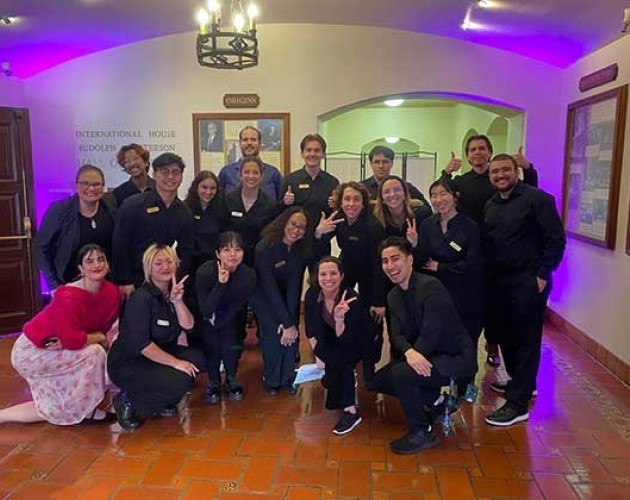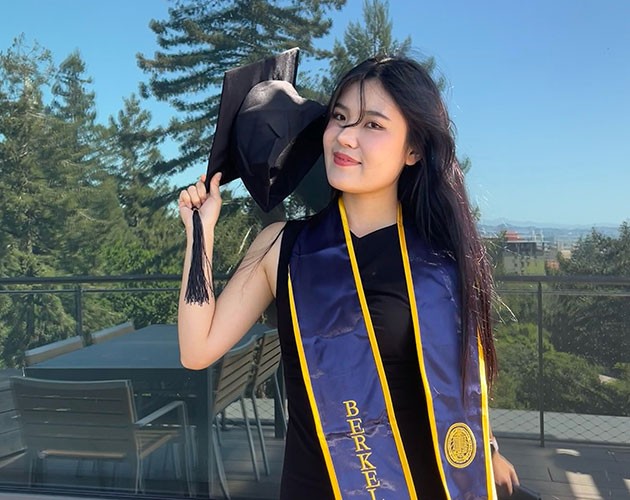Design Thinking at Berkeley and Beyond

Jennifer Caleshu, M.B.A., is a lecturer for the Berkeley Haas Global Access Program (BHGAP), a semester- or year-long entrepreneurship program for international students at UC Berkeley’s Haas School of Business. Caleshu serves as faculty for the Design Thinking course, a core component of the curriculum. She takes an experiential approach to teaching and focuses her class on key areas, including design thinking, systems thinking, and building tools to help frame and solve problems.
We sat down with Jennifer to learn more about her approach and what she sees as the most important lessons students get out of the course.
From Haas Student to Haas Professor
I was in the nonprofit sector for 15 years, working at the Bay Area Discovery Museum as the director of earned revenue, a market strategy role.
At the same time, I was studying for my M.B.A. at Haas through the evening and weekend program. I was actually a student in the first version of the Design Thinking class, taught by Sara Beckman, when I realized I wanted to do more of this! I began as her graduate student assistant (GSI) and served as a GSI in a few other Haas courses.
All of my teaching experiences made me realize this was what I wanted to do with my M.B.A. I left my museum job to be a full-time coach and consultant, and I now serve as the VP of Marketing & Operations and as a facilitator and executive coach at the Berkeley Executive Coaching Institute. Since 2014, I’ve also been teaching in the U.S.—including one of the first classes for the first Berkeley Haas Global Access Program semester—and globally in Thailand, Singapore, Saudi Arabia and other countries.
With international students, it’s all amplified. I’m continually impressed with their bravery and willingness to take on these learning experiences, all in a different language.
I enjoy working with undergraduate students. I love their energy and that I’m giving them something that they can take back and share with others. They make an impact wherever they go. My one-to-one experience with international students gets multiplied when they share the experience in their home countries and universities. This is why I teach. With international students, it’s all amplified. I’m continually impressed with their bravery and willingness to take on these learning experiences, all in a different language.
A Mind-Blowing Shift in Thinking
Through my course, students take away the mindset, the tools and the process to approach problems in a new way. The course incorporates design thinking and systems thinking—approaches to make sure you’re solving the right problem rather than solving the problem you may think exists.
The course incorporates design thinking and systems thinking—approaches to make sure you’re solving the right problem rather than solving the problem you may think exists.
The course can be mind-blowing. It can be 60-percent experiential learning and 40-percent lecture, so we still cover theories and frameworks. Students take part in the learning process and then debrief. They get experience in coming into situations open-minded and developing empathy for their customers. We place a big emphasis in how to work in diverse teams that are not hierarchical and how to encourage creativity.
Students learn how to strike the balance between conflict—being able to disagree—and working in teams. They learn that often there is no right answer; through the design-thinking process, we all get there together and develop a variety of answers.
My approach stems from my background as a practitioner versus an academic. From this practical perspective, students get a concrete experience in my class and real tools they can use and apply. Students emerge with a new way of looking at how to approach problems and develop more out-of-the-box thinking.
Students emerge with a new way of looking at how to approach problems and develop more out-of-the-box thinking.
These concepts can be completely new, especially to students who are coming from more traditional learning environments and who are being used to choosing the answer that seems most apparent. The concepts are challenging for a lot of people. People are generally convergent learners and thinkers—they have been incentivized throughout their academic and work careers to pick a problem and tackle it quickly with the easiest solution, instead of stepping back and thinking broadly, pausing and taking time.
Strengthening Teamwork Through Marshmallows
I make students do a lot of reflecting, to share their experiences. This helps build self-awareness, an important life skill. I love reading those papers where you see the light bulbs going off. How what they’re learning applies to them and what they’ll do in the future.
They learn so much here. We teach ethnographic interviewing, which is a qualitative approach to understanding the needs of your user or your customer. We practice asking good open-ended questions and using active-listening skills, tools that are useful in everyday life.
I get feedback from students that the projects we do in my class—like the “marshmallow challenge”—are helpful to strengthening their team dynamic. The marshmallow challenge is a team activity where students need to build the tallest freestanding structure that can support a single marshmallow, using 20 strands of spaghetti, a yard of tape, a yard of string in 18 minutes. Take one student, Jolin Wu, who emailed me:
As you can see, they learn how to work better with peers and friends. They learn how to brainstorm and different ways of thinking, important skills as they are figuring out what to do with their lives. They learn how to come up with ideas, prototypes, business models and more.
What to Expect: Surprises and Advice for International Students
International students love the diversity here. It’s particularly new and different for students from China who generally have a more a regimented educational system and less variety in the classroom. They get to know Berkeley in all its glories and its flaws. International students are also often surprised with the cost of living and homelessness, and equally surprised to find out that professors really want to hear what they have to say. They also get so much joy going to Disneyland or Yosemite National Park and getting the true California experience. It’s magical to be a part of this aspect of their lives.
Speak up in class even when you don’t know the right answer. We care about you and want you to learn.
I would encourage students to really put themselves out there in as many ways as they can. We want to get to know you, and you can add so much value by sharing your knowledge in the classroom—as a professor, you are giving to me as well!
Speak up in class even when you don’t know the right answer. We care about you and want you to learn.


